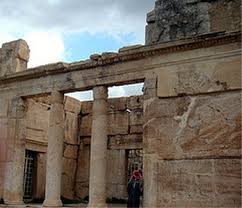
Nature of work
A conservation officer advises on and promotes the conservation of the historic environment. Much of his/her work is with listed buildings or buildings within conservation areas. He/she often deals with buildings and places not controlled through listing and advises on where these or other measures or controls might be put in place to secure conservation to appropriate standards. He/she guides new developments in order to maintain the distinctive character of an area; up to a third of planning applications submitted involve conservation issues. He/she visits sites, inspects and surveys historic sites and buildings, assesses buildings and areas for conservation and produces area assessments and schedules of work. He/she also advises on planning applications and guides new developments that affect the repair or alteration of historic buildings, areas and sites. He/she gets involved in renewing projects that have heritage, community, economic and environmental benefits. He/she assists with enforcement action to protect threatened buildings or conservation areas. Environment of work
Working hours in the public sector are usually 8.30am to 3.30pm. In the private sector hours are more likely to vary, with extra hours and overtime possible while weekend working is possible. Although most of his/her work is office-based, much of the work can be outdoors and on-site. Site visits and inspections are conducted outside in all weathers. There may be considerable travel within a working day, and absence from home overnight may occasionally be necessary. Chances for work or travel overseas is uncommon, but may be available for trainees, those up-skilling form other professions, or for experienced professionals involved in special projects organized by professional people. Self-employment or freelance work is increasingly common as local authorities outsource public services. A reasonable level of fitness and mobility is required as the work can be physically demanding. Site inspections may involve working at heights, climbing ladders or visiting sites where access is difficult. Appropriate safety equipment, such as protective boots and headgear, must be worn on-site. Professional life
Typically, a career path will begin in a trainee position at conservation officer level locally although entry may be possible at technician level in departments such as planning. Within the public sector there are many opportunities for career development. Increasingly, the careers of those working in the private sector are following a similar path. Conservation professionals may also work in national government organizations. Due to the specialist nature of this industry, low turnover of staff may necessitate relocation to achieve career progression and it is common for professionals in this industry to move between local sectors and the private and/or voluntary sectors in order to gain broader experience and seek more senior possession. There are opportunities to move into lecturing work in universities, and consultancy work is also available for conservation professionals with substantial experience. This is likely to focus on advisory cultural evaluation and design work.Range of typical starting salaries: 40000 SYP.
Getting the job
Although this career is open to all graduates, a degree in one of the following subjects may increase his/her chances: Building conservation, planning, building/construction, civil/structural engineering, surveying, architecture, landscape architecture/urban design, heritage management, architectural history, archaeology or history.Many entrants have environment backgrounds, and then go on to specialize in the conservation of the historic environment. Entry without a degree is possible, especially through the planning technician route from where it is possible to move across into historic buildings inspector or conservation officer roles through experience and extra training. Most employers look for candidates with relevant experience, gained through vacation, is advantageous, particularly if his/her degree is not directly relevant.
Skills
A candidate will need to show evidence of the following:· Strong interest and knowledge in historic architecture, building methods and techniques.
· Knowledge of relevant legislation relating to buildings and conservation.
· Ability to work within budget.
· Communication skills, both written and oral, and the ability to liaise effectively with a range of other professionals.
· Good analytical skills, accuracy and attention to detail;
· Ability to sketch designs and plans and understand technical drawings.
· Organizational skills and a methodical approach to work.
· Negotiation skills.
· Team-working skills.
· IT skills.
Sources and references
If you need any further information on what is included in this file, you can visit the following websites:· inspecthistoric.org, Historic Building Inspectors Association,
· The Order of Syrian engineers, Damascus, Tel: 6627256
· www.arab-eng.org, Arab Engineers Forum.
· Arab Standard Classification of Occupations, 2008, Ed. Arab Labor Organization.
Summary
A conservation officer advises on and promotes the conservation of the historic environment. Most of his/her work is with listed buildings or buildings within conservation areas.He/she guides new developments in order to maintain the distinctive character of an area; up to a third of planning applications submitted involve conservation issues. He/she may also be involved in renewing projects that have community, economic and environmental benefits.
